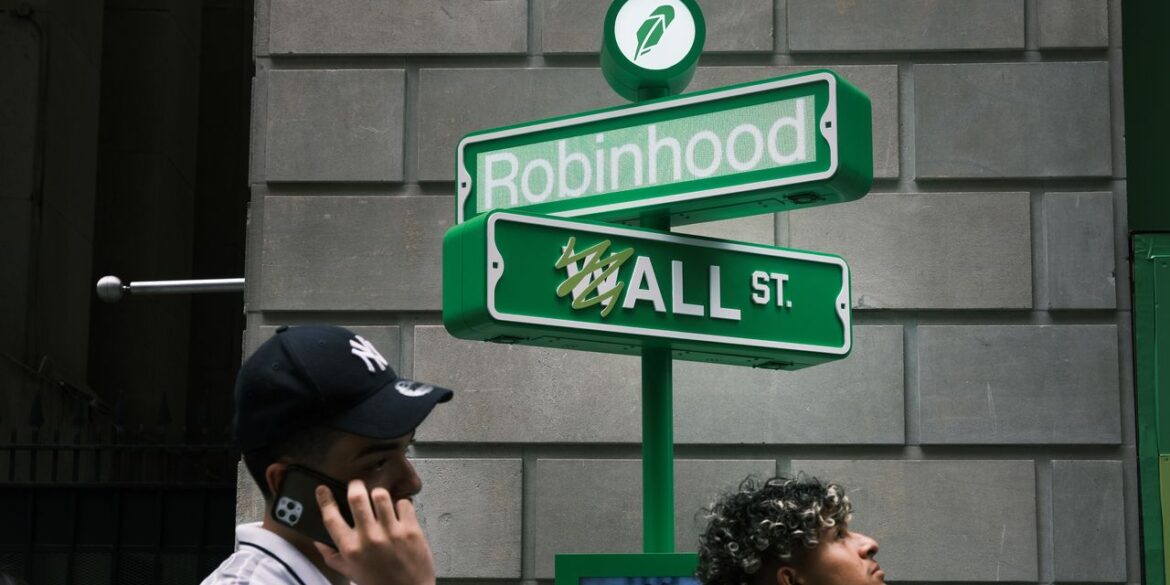Robinhood Markets Inc.’s
HOOD,
second quarter earnings for 2023 were a mixed bag: active users down, but assets under custody up. How do you keep a brokerage going when your user base is shrinking? You get a bigger share of their wallets, and the fattest part of most people’s wallets are their retirement savings.
Hence Robinhood Retirement – an IRA product that offers a 1% match on rollovers and new deposits that launched at the end of last year. Robinhood now has 325,000 funded accounts, up 75,000 since last quarter, according to chief executive Vlad Tenev in the company’s latest earnings call, totaling close to $1 billion in assets under custody. Robinhood will start offering a 3% match to customers of its gold service tier soon.
A company known for meme stock trading and crypto delving into the staid world of long-term investing? Yes, indeed, and mostly pushing a low-cost index-fund approach. They’re also trying to solve one of the stickiest problems in the IRA business – that some 40% of people make retirement deposits and never take the step to invest the money at all, leaving the money in cash.
“We know the perception that’s out there, but this is the opposite of that perception,” says Sam Nordstrom, retirement product manager at Robinhood.
With Robinhood Retirement, you can still pick your own investments if you want, but largely you’re directed toward a recommended portfolio based on traditional investing principles that prize diversification and age-appropriate risk tolerance. The app walks you through a series of typical demographic and goal-setting questions, like when you want to retire.
“If you say you want to retire at 62, you need a portfolio that works over that time horizon, so the first thing we dive into is investing versus cash. We really wanted to hammer that home,” says Nordstrom.
After the live launch, Robinhood quickly learned that telling customers that wasn’t enough. No matter what education they offered, too many people just deposited money and went on with their lives, thinking that they completed the job. It happens not just to novice investors, but across the board at other brokerages and retirement companies, too.
Steph Guild, Robinhood’s head of investment strategy, was especially motivated to solve this problem. “My best friend’s dad passed away and he had cash in his 401(k),” she says, leaving the family with not as many resources as they could have had with steady investment growth.
So beyond making education available, Robinhood pivoted and changed the order of the IRA onboarding transaction so that customers first make their investment selections and then deposit the money. It was a lightbulb moment.
“This is one of the things we changed about the product after we launched. We flipped the order here,” says Nordstrom. “It wasn’t the most intuitive thing, so we changed it to make it more intuitive. Now step one is to figure out where to put your money and step two is to contribute.”
Growing with your customer
Changing the order of IRA account creation might sound like a small step, but understanding user behavior can have big impacts. Another thing Robinhood needed to understand is that the hard-charging ethos that drove the company’s disruption of the brokerage business would not work on the portion of money that people want to keep safe.
“Our average customer is 33 – that’s not super-young anymore. It’s getting to the point where people are starting to think about more things than short-term trading,” says Guild. “People do tend to bucket their trading. They say: ‘This is money I want to be active with, and this is my money I want to trade over time.’”
All this can make the 1% match seem like just a side enticement. You get the most out of it on a large rollover – on $100,000, you’d get $1,000. But ongoing, it would be just $65 a year or so, given that the IRA contribution limit for 2023 is $6,500 for those under 50. You have to keep your money in the account for five years to fully vest the match.
Still, some analysts think getting into the retirement business could broaden Robinhood’s appeal and help it grow revenue. “I think it’s going to be huge,” says Dan Dolev, managing director and senior analyst for fintech equity research at Mizuho. “It shows you that they can think outside their comfort zone. Of course, they lead with this trading-oriented approach, but this is complementary to their current offering, and doesn’t take away from that. That they are not turning this into a circus is a good thing.”
To grab even more wallet share, Robinhood has other changes planned for the future. A credit card program is in the works, thanks to the acquisition of X1. In the earnings call, Tenev hinted the company was looking into retirement advisory services and employer-sponsored retirement plans.
“I want people to be able to use Robinhood for everything,” he said.

